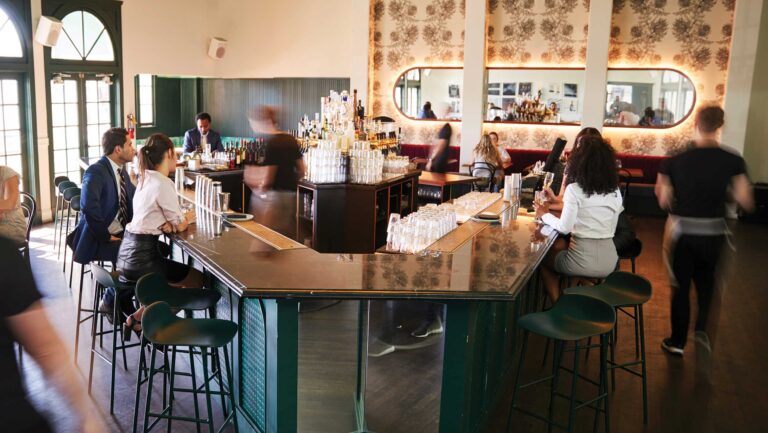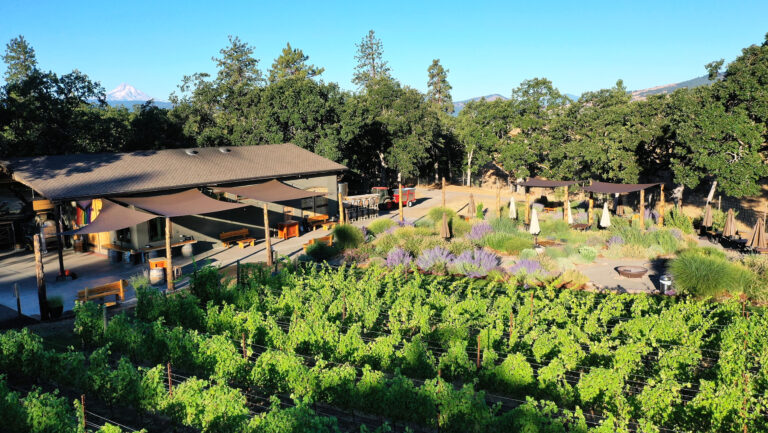Any corporate leader, sports team coach, or savvy bar manager will tell you that it’s amazing what a bit of friendly competition can do for a team. In the case of many bars, encouraging staff to pitch their own drinks and vie for menu placement can result in a more diverse menu and a more engaged team. “A chef probably won’t tell you this, but they’re using their sous chefs and their chefs de cuisine to create [a restaurant’s] menu,” says Aaron Polsky, bar manager of Harvard & Stone in Los Angeles. “We have submissions for the [cocktail] menu that I wouldn’t instinctively lean toward, but they’re really good. It helps bring A-game.”
It also builds morale, gets the staff more engaged, and helps them feel a sense of ownership over the beverage program—rather than leaving them, as Erick Castro, owner of Polite Provisions in San Diego, puts it, feeling “like a robot” tasked with making someone else’s drinks over and over again.
Here’s how five world-class bars encourage their staff to jockey for menu placement, while nurturing team talent along the way:

Don’t miss the latest drinks industry news and insights. Sign up for our award-winning newsletters and get insider intel, resources, and trends delivered to your inbox every week.
Harvard & Stone
When it comes to menu development, Polsky explains that this bar has an “an unusual advantage” in its R&D Bar: an incubator-like venue within Harvard & Stone where staffers test their drinks in a casual, noncommittal environment. Almost every bartender is regularly tasked with creating the night’s R&D Bar menu of four cocktails (and a creative shot/beer combination). Over its six years, the R&D Bar has incubated approximately 10,000 recipes, according to Polsky, who posts up at the bar nightly to taste-test the shift’s offerings. “We’ll pick out some keepers from that,” he says.
Those keepers may make the cut for Harvard & Stone’s main drink menu, to which staffers are also expected to regularly contribute “thoughtful submissions that are the result of hard work and hard thinking,” says Polsky. “We have at least one meeting [prior to menu turnover] where everybody makes their submissions [to the next menu]. I’ll look at all of them and then re-spec them as needed.” The process results in a more well-rounded menu and a more invested team. Polsky says he works one-on-one with staff members “to suss out where they are [and to] help them develop new drinks and learn ways of balancing drinks.” Plus, he adds, “They feel ownership. When somebody orders their drink, they’re stoked about it.”
Polite Provisions
Even when Castro isn’t prepping a new menu, he regularly assigns what he calls “homework” to his staff. “It might be something like, in 30 days I want three cocktails from each of you: a Collins variation, a sparkling cocktail, and a Mai Tai riff,” he says. “I want [the staff] to be on their toes and be the best they can be.” During menu development, the seven-person bar staff is asked to contribute recipes; each drink must pass a rigorous but collaborative peer critique. Castro describes it as “running the gauntlet,” adding that “the cocktail has to come out on the other side.” Though to be clear, he says, he fosters an environment that’s more collaborative than cutthroat. “With competition, people don’t want to reveal their secrets because it’s about winning. But with us, everyone wants to help everyone else’s drink be better.”
Castro sees this as a way to take bartenders out of their comfort zone—and, ultimately, to attract likeminded talent. “What ends up happening is, all the best people in town want to work for you, because they know if they work for you, they’re going to be better,” he says. (It’s worth noting that, at five years in, Polite Provisions is still operating with nearly all of its opening crew.) As for how other operators can pull it off, Castro suggests being mindful of the fact that the creative process is exactly that: a process. “Not every first draft is going to be a future classic,” he says. “It’s important that all criticism is constructive and [that] the staff never feels berated or discouraged. Instead, all critiques should serve the primary purpose of making the drink be as good as it can possibly be.”
American Bar at the Savoy
The American Bar at the Savoy in London is widely considered one of the world’s most prestigious cocktail bars—and bar manager Declan McGurk attributes that success in part to the bar’s collaborative process. During development, McGurk and head bartender Erik Lorincz first define a structure for the next menu. “Then, the team is given their base spirit and drink topic to research and a style we are looking to achieve,” he explains. After completing their assignments, staff then present the results to Lorincz and McGurk. “From here, we decide if [the cocktail] is ready for the menu or if a redesign is required,” says McGurk. “This way, all the drinks have [Lorincz’s] signature, but at the same time the team is fully involved and genuinely encouraged to create.”
That invitation extends to staff at all levels, from barbacks to white-jacketed senior bartenders. “Anyone who steps behind the bar and makes drinks is a part of the process,” says McGurk, adding that a team-sourced menu helps facilitate the bar’s ultimate goal: delivering a world-class experience to guests. “Ownership is such an important aspect of selling service,” McGurk says. “If the team believes in what they do, their product will be much stronger and [that will] ultimately [benefit] the guest experience and revenue potential.”
BlackTail
New York’s BlackTail has steadily evolved its staff menu development process in its first year, says bar manager Jesse Vida. “When we did our first seasonal menu, I assigned every bartender two styles of cocktail with specific flavor profiles to work with,” he explains. “By the second menu, they were simply assigned [the] style of cocktail.” For the most recent menu, BlackTail implemented a bar mentor program, in which senior and junior bartenders were paired up and asked to create two drinks as a team. The best drinks were then featured on the menu. “It was an all-around great way to empower everyone involved, and they came out with some amazing drinks,” Vida says.
When time is money, more senior (and thus, higher-paid) staff have to allocate their time efficiently, making it sometimes tricky to balance mentorship with protecting the bottom line. But, Vida adds, “when it comes to creating a cocktail menu, more palates are better than one. There can definitely be too many chefs in the kitchen, but the middle ground is exactly where you need to be for the greatest results.”
Porchlight
Nick Bennett, head bartender at New York’s Porchlight, doesn’t require employees to contribute a set number of drinks per year. But, he says, “I do require input from the rest of the team—and that a cocktail is submitted on time if it is intended for the menu.” The bar holds monthly team meetings, and the meeting prior to the next submission deadline is considered a pitching session. “If there are cocktails that a member of our team wants to put on the menu, they will R&D the recipe and test everything from the spirits and [how they relate to each other] in the cocktail to the syrups and how they affect the texture,” says Bennett.
He adds that when multiple staff members are pitching similar styles of drink, “a little showmanship and competition comes up among the team.” All levels of staff are encouraged to participate in menu development at Porchlight. Bennett always begins by telling them that even though their cocktails may not actually make it onto the menu this time, the chance to have all of their peers talk about and critique their cocktail concept is a great learning experience. “We have so many talented individuals behind our bar, with so many areas that they excel [in], that our bar wouldn’t be half as amazing if everyone didn’t have some say in our program.”

Dispatch
Sign up for our award-winning newsletter
Don’t miss the latest drinks industry news and insights—delivered to your inbox every week.
Gray Chapman is an Atlanta-based journalist who writes about spirits, beauty, and culture; she was formerly the managing editor of Tales of the Cocktail. Follow her on Twitter.







